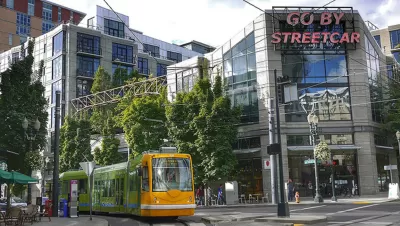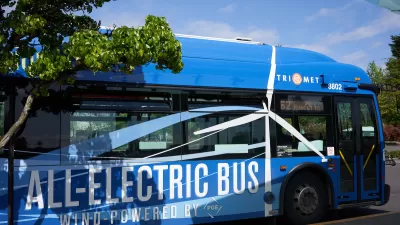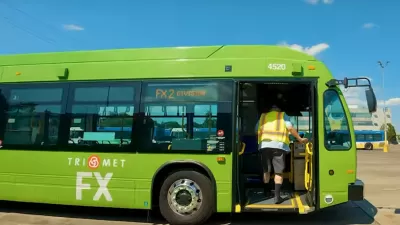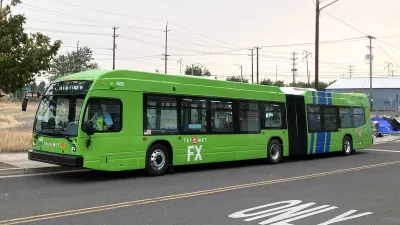A TriMet transit agency analysis has identified a culprit in the decline of transit ridership in Portland: gentrification and displacement.

Tom Mills and Madeline Steele, staff for Portland's TriMet transit agency, write a post for TransitCenter presenting evidence of a newly discovered correlation between rising housing costs and declining transit ridership.
TriMet is one of many transit systems around the country challenged by declining ridership. In Portland, such losses have already been blamed on "a diverse range of factors including changing employment levels and recession era fare increases and service cuts," according to Mills and Steele. But "TriMet’s analysis surfaced one driver of ridership loss that stood out among the rest: the impact of the economic displacement of low-income earners from inner city neighborhoods to first ring suburbs."
The article details the methodology of TriMet's analysis, and provides context on the recent history of the Portland housing market. Mills and Steele then state a key findings with potentially far-reaching implications for the trend of gentrification and urban revitalization in in other cities around the country. "We found substantial overlap between areas where real market home value increased and transit ridership decreased the most," they write, and "transit ridership grew in areas that saw minimal increases in real market home values."
To summarize: higher-wage earners moving into transit-rich neighborhoods use transit less that the lower-income residents who are departing these neighborhoods.
Hat tip to Angie Schmitt for sharing the article.
FULL STORY: In Portland, Economic Displacement May Be A Driver of Transit Ridership Loss

Study: Maui’s Plan to Convert Vacation Rentals to Long-Term Housing Could Cause Nearly $1 Billion Economic Loss
The plan would reduce visitor accommodation by 25,% resulting in 1,900 jobs lost.

North Texas Transit Leaders Tout Benefits of TOD for Growing Region
At a summit focused on transit-oriented development, policymakers discussed how North Texas’ expanded light rail system can serve as a tool for economic growth.

Why Should We Subsidize Public Transportation?
Many public transit agencies face financial stress due to rising costs, declining fare revenue, and declining subsidies. Transit advocates must provide a strong business case for increasing public transit funding.

How to Make US Trains Faster
Changes to boarding platforms and a switch to electric trains could improve U.S. passenger rail service without the added cost of high-speed rail.

Columbia’s Revitalized ‘Loop’ Is a Hub for Local Entrepreneurs
A focus on small businesses is helping a commercial corridor in Columbia, Missouri thrive.

Invasive Insect Threatens Minnesota’s Ash Forests
The Emerald Ash Borer is a rapidly spreading invasive pest threatening Minnesota’s ash trees, and homeowners are encouraged to plant diverse replacement species, avoid moving ash firewood, and monitor for signs of infestation.
Urban Design for Planners 1: Software Tools
This six-course series explores essential urban design concepts using open source software and equips planners with the tools they need to participate fully in the urban design process.
Planning for Universal Design
Learn the tools for implementing Universal Design in planning regulations.
Ascent Environmental
Borough of Carlisle
Institute for Housing and Urban Development Studies (IHS)
City of Grandview
Harvard GSD Executive Education
Toledo-Lucas County Plan Commissions
Salt Lake City
NYU Wagner Graduate School of Public Service





























